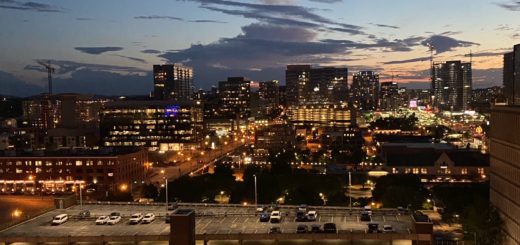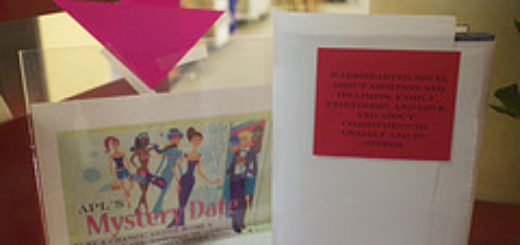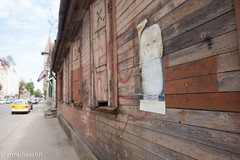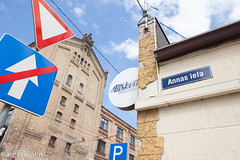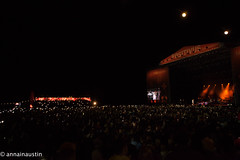It’s Your Last Week to Check Out “Portal to Bohemia”
The 1920’s are often seen as a golden age of literature and art. For example, Woody Allen’s Golden Globe winning art house blockbuster “Midnight in Paris” features Owen Wilson’s character Gil repeatedly rhapsodizing about the heady literary stew that was in Paris in the 1920’s.
On our side of the Atlantic, there was Greenwich Village, the physical home of much of the intellectual and artistic ferment in America in the 20’s.
This is your last week to catch the Harry Ransom Center’s free exhibition, “The Greenwich Village Bookshop Door: A Portal to Bohemia, 1920-1925” focusing on a bookshop owned by Frank Shay in Greenwich Village in the early 1920’s, located at 4 Christopher Street.
The exhibit features a wooden interior door for “Frank Shay’s Bookshop” that was signed by 242 writers, literary bigwigs and assorted cultural figures of the era. This pine door was so important to the bookshop that when the store closed down in 1925, the door was removed from the premises.
While it’s taken some time to figure out exactly who signed the slab of wood, it’s now clear that signatures on the door range from Theodore Dreiser to members of the Provincetown Players. Some 50 or so of the signatures on the door are still in the process of being identified.
The exhibit explains that Shay appropriated the door in 1921, taking it from a nearby building that was being demolished. As Shay’s bookshop existed during Prohibition, a note in the exhibit speculates that the door served as the portal to not only bohemia, but, at least for a time, it might also have been the place behind which one could hide if one needed a medicinal -and illegal—nip. (The online exhibit claims Shay was no teetotaler.)
As “A Portal to Bohemia” demonstrates, during the 1920’s, Greenwich Village was such a place apart from the rest of America that guides offered tours of the area. (Perhaps it was the Williamsburg of the Prohibition era, but with more structured hats?) Thus, it seems that the people who popped into a bookstore in an arty neighborhood –and signed the door– had an artistic and cultural reach far outside of the Greenwich Village neighborhood.
The items displayed in the “Portal to Bohemia” exhibit are eclectic. They range from a gift pig signed by Yankee inventor Buckminster Fuller to a book elegantly inscribed by F. Scott Fitzgerald, who had not only outstanding prose, but also beautiful penmanship!
The exhibit also traces the relationship between the bookshop and the Provincetown Players, as well as attempting to explore the connections between other aspects of the Greenwich Village artistic scene.
In many ways, the exhibit is like a literary and cultural detective story. It starts with the evidence presented by the door, and unravels the story from there. Once you’ve seen the artifacts on display at the Ransom Center, you might want to spend some time playing with the web version of the exhibition— trying to make sense of the connections that have recently been unveiled.
If you visit the exhibition and happen to recognize your great-grandmother’s signature on the door, the folks at the Ransom center would love to know about it. They are enlisting the public’s help in deciphering the still-unknown signatures on the door!
Note: It’s easy to walk out of the back of this exhibit and into the back of the Ransom Center’s other exhibit “Banned Burned Seized and Censored” without realizing what you’ve done.
Both “A Portal to Bohemia” and “Banned Burned Seized and Censored” only run though this Sunday, January 22. The exhibitions are open until 7 p.m. on Thursday.

